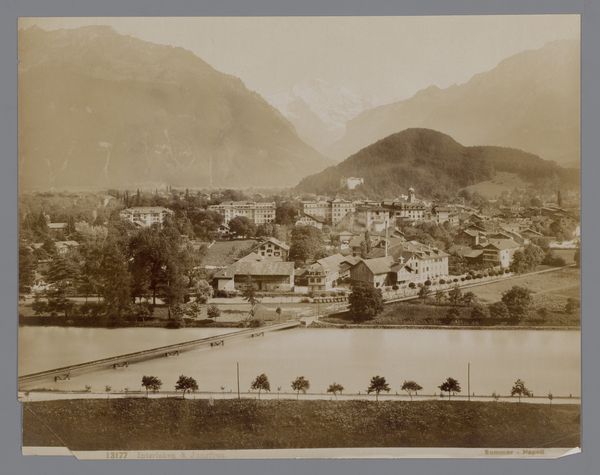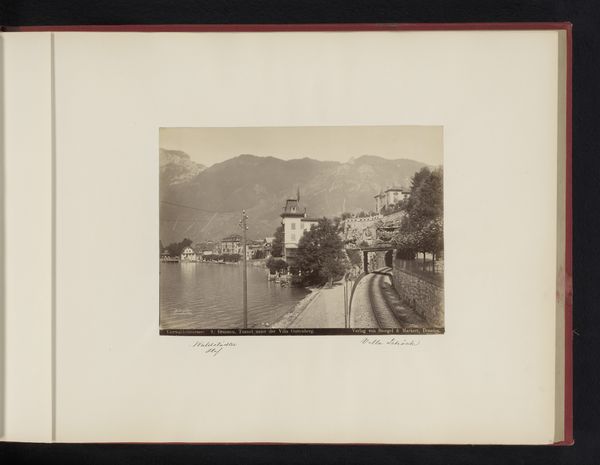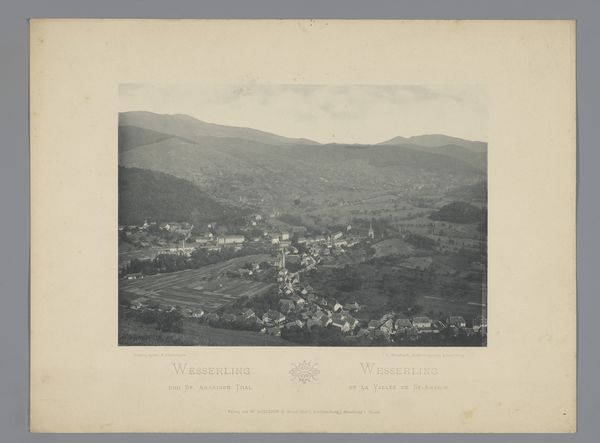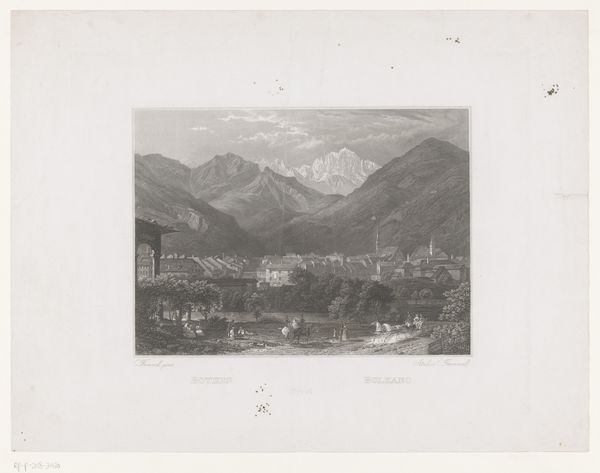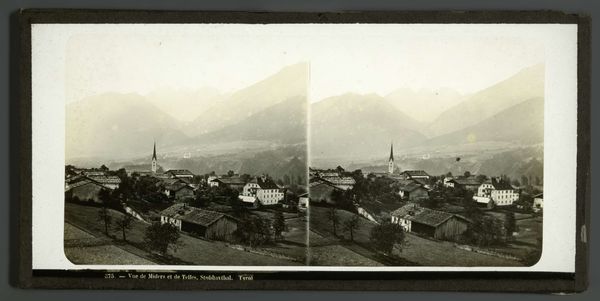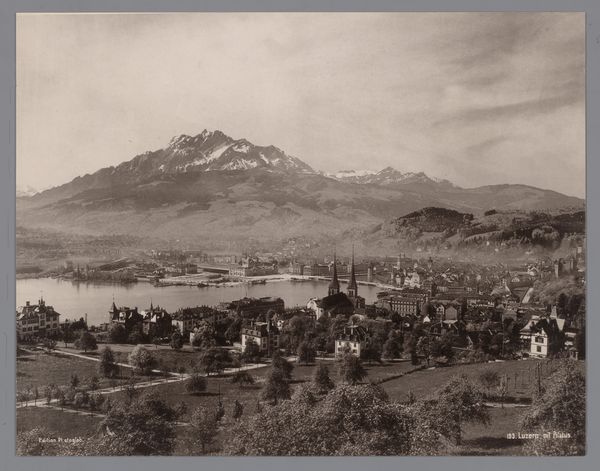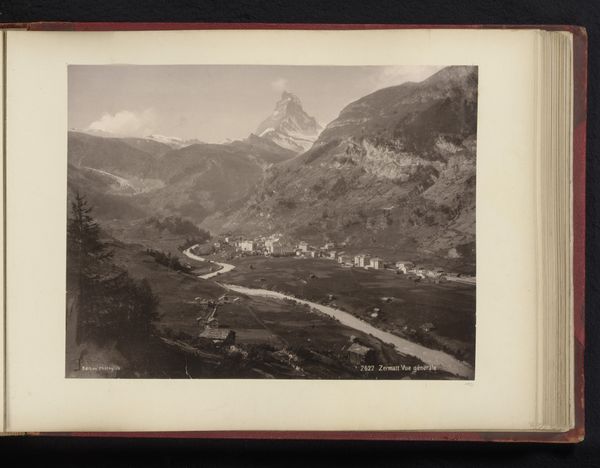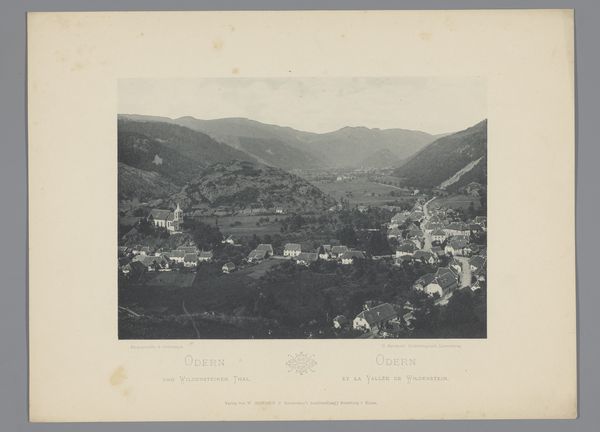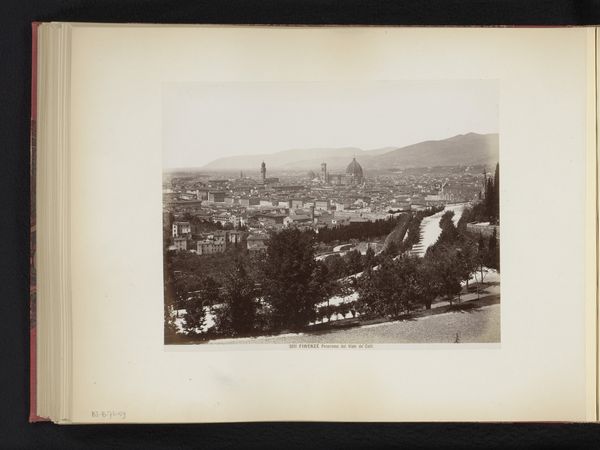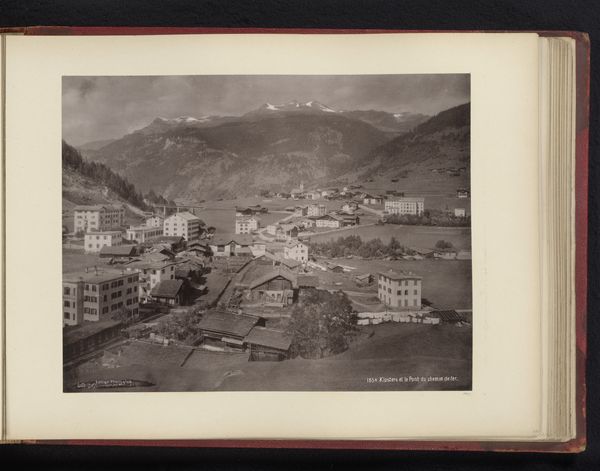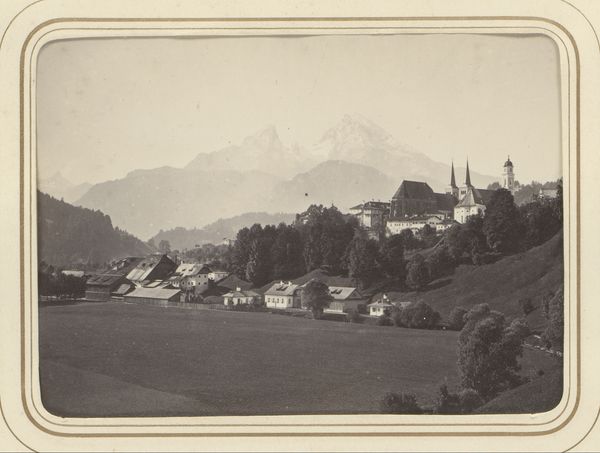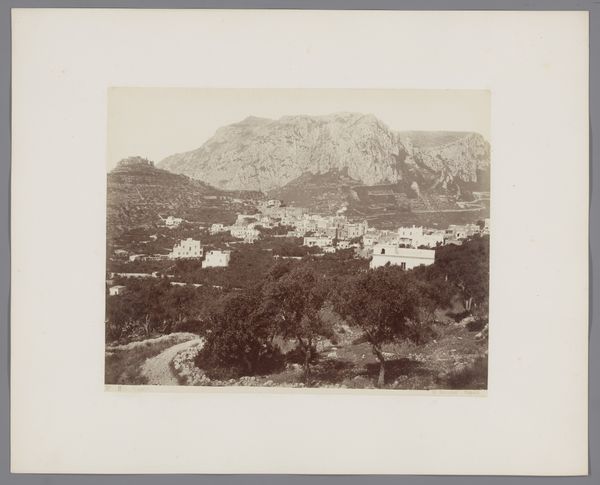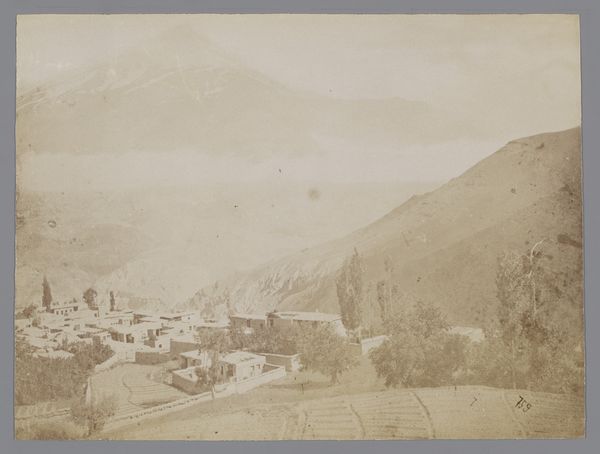
photography, gelatin-silver-print
#
pictorialism
#
landscape
#
photography
#
gelatin-silver-print
#
cityscape
#
watercolor
#
realism
Dimensions: height 265 mm, width 350 mm
Copyright: Rijks Museum: Open Domain
Curator: Right, let’s delve into this gelatin silver print titled “Gezicht op Luzern met de Pilatus,” which translates to “View of Lucerne with Mount Pilatus.” It’s dated 1897 and held here at the Rijksmuseum. Editor: Instantly, I’m struck by its muted tones, almost sepia-like. It's as if time itself is gently washing over the scene, softening every edge and making me question, ‘what was it like for the laborer who was involved in its production, and distribution?’ Curator: The image presents a panoramic view of Lucerne, dominated by the majestic Pilatus mountain range. You're right about the tones. This period, toward the late 19th century, was very self conscious. People who made images were striving to distance themselves from mechanical mass production, embracing a softer pictorialism that almost recalls watercolor painting. Editor: Exactly! The materiality feels contradictory, doesn’t it? A photograph, with its claims of objectivity, rendered so ethereally. And a laborer preparing gelatin? Silver nitrate emulsion? There's so much invisible labor that made it possible for an image like that to exist, but its all for the wealthy class to consume images that are deemed of higher status. Was it made to reflect something for the upper-class citizen? Curator: A keen observation. The soft focus and carefully controlled contrast definitely lean toward an idealized, rather than a strictly realistic depiction. I see the composition itself playing a vital role. See how our eyes move from the lower-ground foliage of trees up over the cityscape and across Lake Lucerne before arriving at the dramatic mountain peaks. Editor: That tension, that manipulation. It leads me to think about who is framed in this view, and for whom that person is positioned. It feels designed for the bourgeois sensibility. There is also the human figure almost disappearing at the margin of the view on the bottom right. Perhaps reminding us, but also quickly diminishing any social conscience? Curator: Possibly so. One reading certainly is the human presence being diminished in relation to nature’s overwhelming power. Yet I find the photographer, the creator’s sensitivity remarkable. And who they saw themselves, or desired to see themselves. What a fascinating dialogue this photo has provoked! Editor: Indeed, from invisible labor to manufactured class perspectives, a photo ostensibly 'capturing a moment’ opens to expose so much more!
Comments
No comments
Be the first to comment and join the conversation on the ultimate creative platform.
